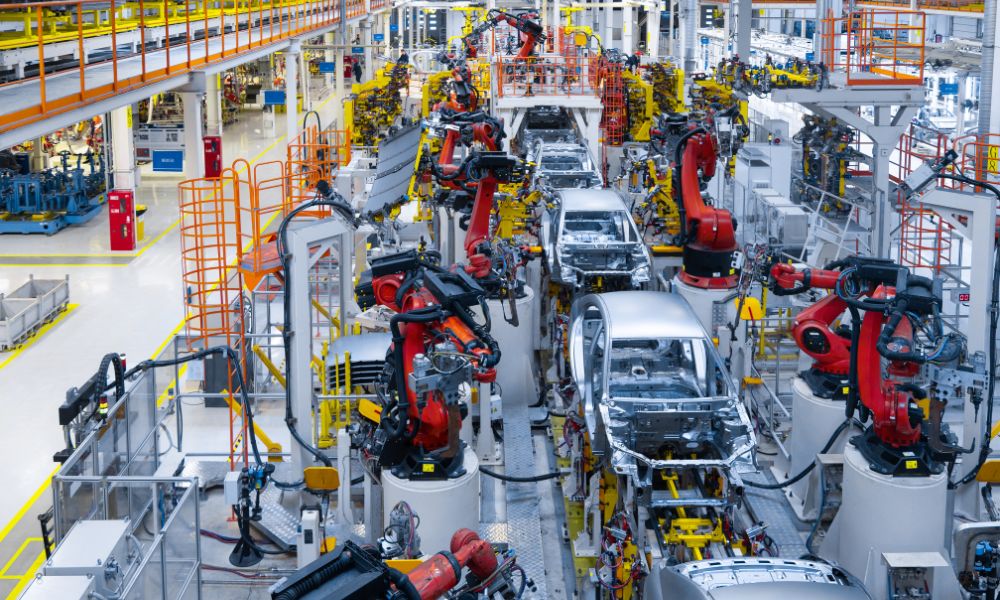Urban areas face unique challenges related to transportation, including congestion, pollution, and limited parking space.
To address these issues, urban automotive solutions have emerged as innovative approaches tailored specifically for city dwellers.
This comprehensive guide explores various aspects of urban automotive innovations, from Electric Vehicles (EVs) to Urban Air Mobility, highlighting their impact on urban living.
As cities grow in population and density, traditional modes of transportation become increasingly inadequate.
The rise of urban automotive solutions represents a paradigm shift in how people navigate urban environments.
These innovations aim to create more sustainable and efficient urban transportation systems, from reducing emissions to improving traffic flow.
Electric Vehicles (EVs)

Electric Vehicles (EVs) signify a monumental shift in the automotive solutions, presenting a cleaner and more sustainable alternative to conventional gasoline-powered vehicles.
Unlike internal combustion engines, which rely on fossil fuels and emit harmful pollutants, EVs run on electricity stored in rechargeable batteries.
This technology dramatically reduces greenhouse gas emissions and air pollution, positioning EVs as vital in combating climate change and enhancing urban air quality.
Additionally, EVs offer numerous advantages for city dwellers, including lower operating costs, quieter operation, and smoother acceleration.
Advancement in battery technology and charging infrastructure are increasingly rendering Electric Vehicles (EVs) more viable and attainable for consumers.
Governments worldwide incentivize EV adoption through tax credits, rebates, and infrastructure investments.
As EV technology continues to evolve, it has the potential to revolutionise the way we think about transportation and reshape urban landscapes for a more sustainable future.
Autonomous Vehicles
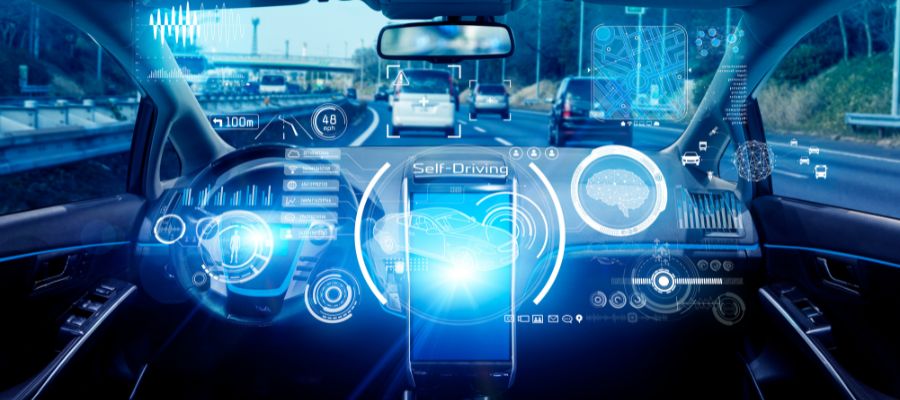
Autonomous Vehicles (AVs) represent a groundbreaking innovation in the urban automotive solutions, poised to revolutionise how people and goods move within cities.
These self-driving cars utilise advanced sensors and artificial intelligence (AI) algorithms to perceive their surroundings, make decisions, and navigate urban environments without human intervention.
One of the paramount benefits of Autonomous Vehicles (AVs) is their capacity to bolster road safety.
By eliminating human error, a primary contributor to accidents, AVs promise to significantly diminish the occurrence of traffic collisions and fatalities.
Additionally, AVs can improve traffic efficiency by optimising speed, spacing, and routing, reducing congestion and travel times.
Moreover, AVs offer mobility solutions for individuals who cannot drive due to age, disability, or other factors.
By providing accessible and convenient transportation options, AVs have the potential to enhance equality and inclusion in urban mobility.
However, the widespread adoption of AVs raises challenges and questions related to regulation, privacy, and ethics.
Addressing these challenges is important to unlock the complete potential of AVs and guarantee their constructive contribution to the future of urban transportation.
Urban Mobility Solutions
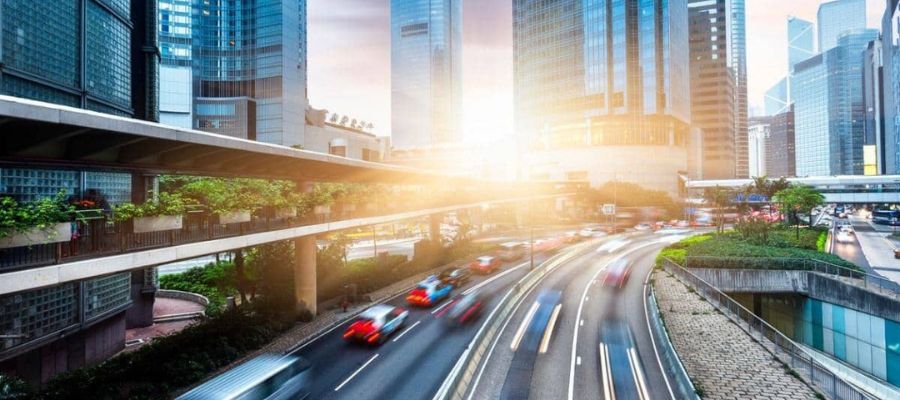
Urban Mobility Solutions encompass various innovative approaches to improve transportation in urban areas.
These solutions address the challenges of congestion, pollution, and limited space while promoting sustainability and efficiency.
Ride-sharing services like Lyft and Uber are significant aspects of urban mobility solutions. These services utilise technology to connect passengers with drivers, reducing the need for individual car ownership and easing traffic congestion.
Additionally, vehicle-to-everything (V2X) technology enables seamless communication between vehicles, infrastructure, and pedestrians, improving safety and efficiency on urban roads.
Car-sharing platforms like Zipcar and Car2Go offer flexible transportation options for urban residents, reducing the number of vehicles on the road and alleviating parking pressures.
Micro-mobility options such as scooters and bikes provide eco-friendly alternatives for short-distance travel, reducing reliance on cars and public transit.
By integrating these urban mobility solutions into the fabric of smart cities and prioritising sustainable transportation initiatives, cities can create more inclusive and accessible transportation systems for all residents.
Smart City Integration with Automotive
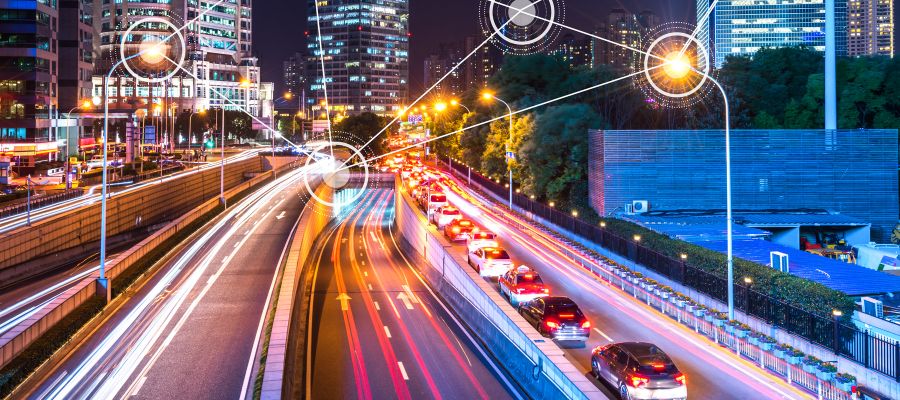
Smart City Integration with Automotive involves seamlessly incorporating automotive solutions into the broader smart cities framework.
This integration aims to enhance urban mobility, reduce congestion, and improve city dwellers’ overall quality of life.
Key components of this integration include vehicle-to-everything (V2X) communication, which enables vehicles to communicate with each other, traffic lights, and other infrastructure in real time.
This communication allows for more efficient traffic management, reducing congestion and emissions.
Another aspect is integrating intelligent parking solutions, which use sensors and data analytics to help drivers find parking spots more easily.
This reduces the time spent circling for parking, reducing traffic congestion and emissions.
Additionally, intelligent city integration includes the development of connected infrastructure, such as traffic lights and road signs, that can communicate with vehicles to optimise traffic flow.
Smart City Integration with Automotive is a critical step toward creating more efficient, sustainable, and user-friendly urban transportation systems.
Urban Delivery Solutions
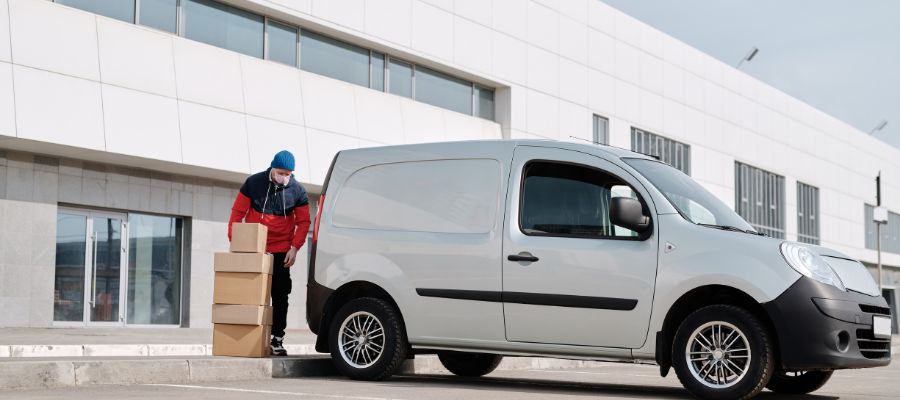
Urban Delivery Solutions are crucial in addressing the growing demand for efficient and sustainable last-mile logistics in cities. The surge of e-commerce and online shopping has created an unprecedented demand for innovative delivery methods.
Companies are exploring various urban delivery solutions to streamline the delivery process and reduce environmental impact.
One such solution is using electric cargo bikes, which offer a sustainable alternative to traditional delivery vehicles. These bikes are agile and compact, allowing delivery personnel to navigate crowded urban streets easily.
Electric cargo bikes help improve air quality and enhance the overall urban environment by reducing emissions and congestion.
Another emerging trend in urban delivery solutions is the use of delivery robots. Autonomous robots have the capability to traverse sidewalks and pedestrian zones, facilitating direct delivery of packages to customers’ doorsteps.
By reducing the need for large delivery vehicles, robots help alleviate traffic congestion and minimise the carbon footprint of urban logistics operations.
Overall, urban delivery solutions leverage technology and innovation to create cities’ more efficient and sustainable last-mile delivery networks.
By using these solutions, cities can improve people’s lives while also helping environmental sustainability and economic growth.
Micro-Mobility

Micro-mobility encompasses small, lightweight vehicles designed for short-distance travel in urban environments.
These vehicles, including scooters and bikes, play a crucial role in addressing the challenges of congestion, pollution, and limited space in cities.
Scooters, often called electronic or e-scooters, have gained popularity due to their convenience and accessibility.
Riders can quickly locate and unlock scooters using mobile apps, making them ideal for short trips or the “last mile” of a journey.
Similarly, bikes offer a sustainable and healthy alternative to traditional modes of transportation.
With the rise of bike-sharing programs and dedicated bike lanes, cycling has become a viable option for urban commuters.
Micro-mobility promotes active transportation and reduces reliance on cars, contributing to cleaner air and less traffic congestion.
However, safety and regulatory issues must be addressed to ensure the widespread adoption and integration of micro-mobility solutions into urban transportation systems.
Urban Parking Solutions
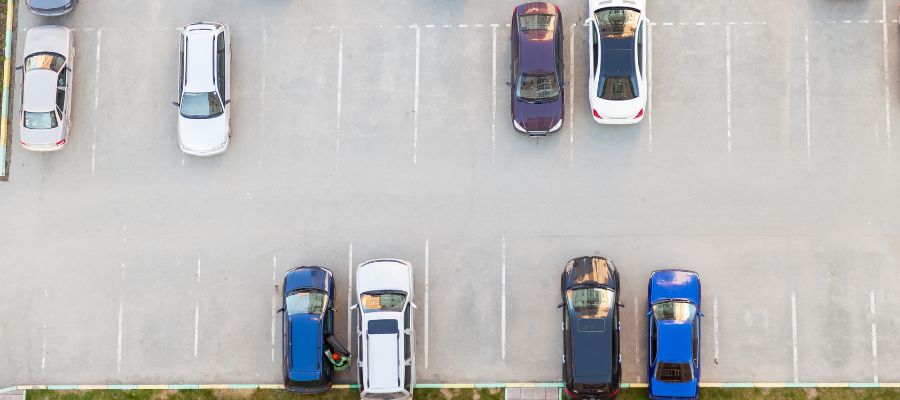
Urban areas often face a shortage of parking spaces, leading to congestion, pollution, and frustration among drivers.
To address these challenges, innovative urban parking solutions have been developed to optimise parking availability and improve the overall parking experience for city dwellers.
One key solution, especially beneficial for urban development and sustainability, is the implementation of intelligent parking systems. These systems utilize advanced sensors and real-time data to monitor parking availability and provide drivers with instant information on available parking spots.
Such innovative solutions not only enhance convenience for drivers but also pave the way for more efficient urban planning and management.
For a growing business or organization, partnering with a knowledgeable growth consultant can help leverage these technologies effectively, ensuring sustainable growth and adaptation to evolving market demands.
These systems help reduce the time spent searching for parking, minimising traffic congestion and emissions.
Another approach is the development of multi-level and underground parking structures, which maximise parking capacity while minimising the use of valuable urban space.
These structures are often equipped with advanced technology, such as automated parking systems, to enhance efficiency and convenience further.
Additionally, cities are exploring alternative parking options, such as shared parking facilities and remote parking lots connected to public transportation networks.
These solutions encourage the use of alternative modes of transportation and reduce the need for individual car ownership.
Overall, urban parking solutions play a crucial role in improving urban mobility and reducing the environmental impact of transportation.
By embracing these innovative solutions, cities can create more sustainable and livable urban environments for all residents.
Urban Air Mobility (Flying Cars)
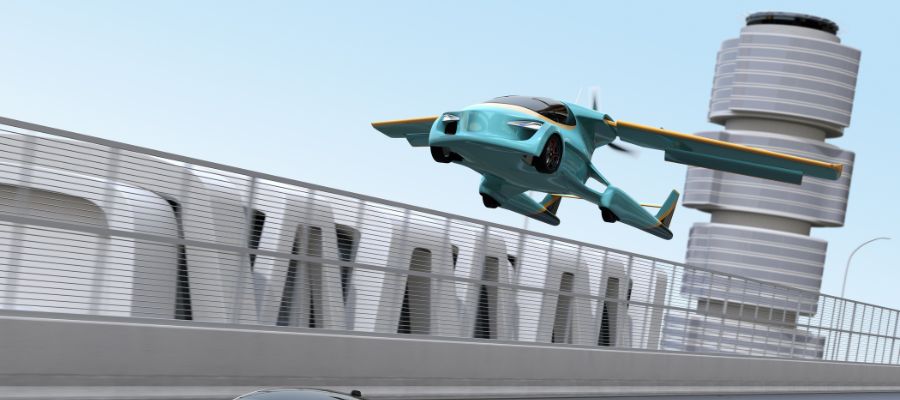
Urban Air Mobility (UAM) represents a futuristic vision of urban transportation where flying cars and drones seamlessly navigate the skies above cities.
This innovative concept aims to alleviate traffic congestion and reduce travel time by utilising the airspace for passenger and cargo transportation.
UAM vehicles, powered by electric propulsion systems, offer a cleaner and quieter alternative to traditional aircraft, making them well-suited for urban environments.
Advanced technologies such as vertical takeoff and landing (VTOL) enable UAM vehicles to operate in confined spaces, such as rooftops or designated landing pads, further optimising urban mobility.
Key UAM players are developing vehicles with autonomous capabilities, allowing for safe and efficient operation without the need for a pilot’s licence.
Regulatory bodies are diligently crafting frameworks for Urban Air Mobility (UAM) operations, with a focus on ensuring safety, efficient airspace management, and mitigating noise pollution concerns.
While UAM is still in the early stages of development, it holds immense potential to revolutionise urban transportation, offering a new dimension of mobility that complements existing modes of travel. As cities continue to grow and evolve, UAM could play a significant role in shaping the future of urban mobility.
Sustainable Transportation Initiatives
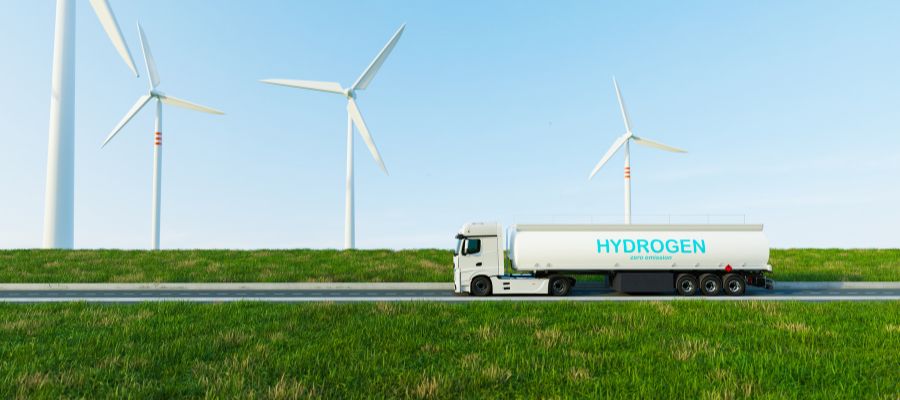
Sustainable Transportation Initiatives encompass a range of strategies to reduce the environmental impact of urban mobility.
Key initiatives include promoting electric vehicles (EVs) through incentives and infrastructure development, such as charging stations and dedicated lanes.
Additionally, cities invest in public transit systems to encourage mass transportation and reduce reliance on individual cars.
Bike lanes and pedestrian-friendly infrastructure promote active transportation, improving air quality and public health.
Car-sharing programs, like Zipcar and Car2Go, offer convenient alternatives to car ownership, reducing the overall number of vehicles on the road.
Smart traffic management systems optimise traffic flow and reduce congestion, further enhancing the efficiency of transportation networks.
By integrating these initiatives, cities can create more sustainable and equitable transportation systems, reducing emissions and improving the quality of life for all residents.
Emphasising equality, diversity, and inclusion ensures these initiatives benefit communities of all backgrounds, promoting a more resilient and vibrant urban environment.
Urban Infrastructure for Electric Vehicles
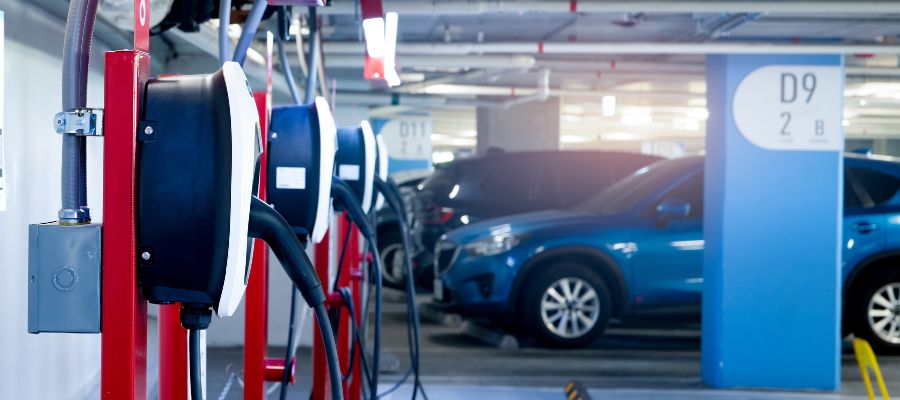
Urban infrastructure for Electric Vehicles (EVs) facilitates widespread adoption and integration into urban transportation systems.
Key components of this infrastructure include charging stations and dedicated EV lanes.
Charging stations are essential for EV owners to recharge their vehicles while on the go. They come in various forms, including public charging stations in parking lots, streets, and other urban areas.
Fast-charging stations are particularly important in urban areas, allowing EVs to recharge quickly and efficiently.
Dedicated EV lanes are reserved for electric vehicles, giving them priority access to certain roadways.
These lanes help reduce congestion and promote the use of EVs by ensuring faster and more reliable travel times.
Additionally, urban infrastructure for EVs may include incentives such as free or discounted parking for electric vehicles and policies that encourage the installation of charging infrastructure in new developments.
Overall, investing in urban infrastructure for Electric Vehicles is essential for creating a more sustainable and efficient urban transportation system.
Cities can foster the widespread adoption of Electric Vehicles (EVs) and diminish dependence on fossil fuels by establishing the essential infrastructure. This initiative will result in cleaner air and healthier communities.
Last-Mile Delivery Solutions
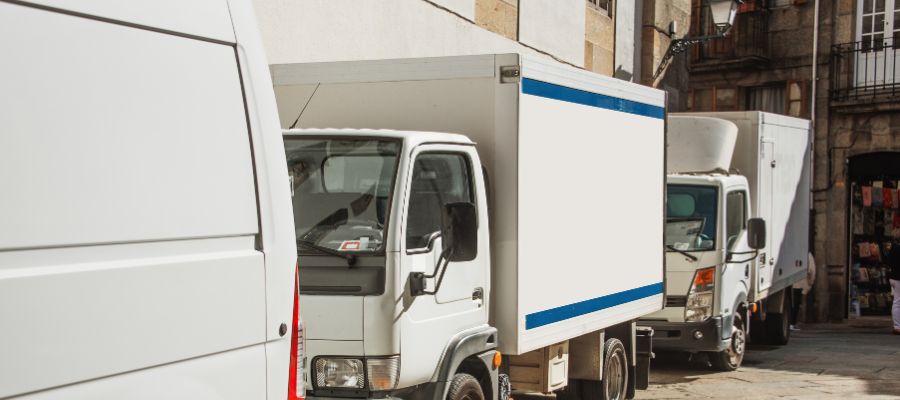
Last-Mile Delivery Solutions play a crucial role in the efficiency and business sustainability of urban logistics. These solutions are centred on the ultimate leg of the delivery journey, spanning from distribution hubs to the doorstep of the end consumer.
As the need for quicker and greener delivery methods rises, businesses are delving into inventive strategies like electric cargo bikes, delivery drones, and autonomous robots.
Electric cargo bikes offer an elegant and environmentally friendly alternative to traditional delivery vehicles, especially in congested urban areas. Equipped with electric motors, these bikes can easily carry large payloads while navigating narrow streets and bike lanes.
On the other hand, delivery drones promise swift aerial delivery of packages, bypassing traffic congestion and reducing delivery times.
Autonomous robots are also deployed for last-mile delivery, autonomously navigating sidewalks and streets to deliver parcels directly to customers’ homes.
By leveraging these Last-Mile Delivery Solutions, companies can streamline the delivery process, reduce emissions, and enhance the overall customer experience.
These innovations represent a glimpse into the future of urban logistics, where efficiency and sustainability go hand in hand.
Conclusion
The rise of urban automotive solutions represents a transformative shift in how cities approach transportation and mobility. From Electric Vehicles to Urban Air Mobility, these innovations promise to make urban living more sustainable, efficient, and enjoyable.
By embracing urban automotive solutions and initiatives, cities can create more inclusive and resilient transportation systems that benefit everyone.
In conclusion, the urban automotive solutions is poised for continued growth and innovation as cities grapple with urbanisation and sustainability challenges. By prioritising equality, diversity, and inclusion in the development and implementation of urban automotive solutions, cities can ensure that these innovations benefit all residents, regardless of background or socioeconomic status.
As urban automotive continues to evolve, it will be essential for cities to collaborate with stakeholders from all sectors to build a more equitable and sustainable urban future.
Walter & Associates, a renowned consultancy, specialises in guiding businesses towards sustainable growth. Leveraging their expertise in diverse industries, they offer tailored solutions to optimise performance and enhance market competitiveness.
Through strategic planning, market analysis, and innovative approaches, Walter & Associates empowers clients to navigate challenges and seize opportunities in dynamic business environments. They are committed to excellence and client success and serve as trusted partners in driving meaningful growth and achieving long-term objectives.

